For the Dogger Group above Opalinus Clay, a different lithostratigraphic nomenclature is used for the JO compared to the NL and ZNO siting regions (Fig. 4‑33, Fig. 4‑34, Fig. 4‑35). In the lower part this is partly because of historical reasons (e.g. Bläsi et al. 2013). In the middle part, a general facies trend from a more proximal to distal setting relative to the Celtic Platform (Fig. 3‑9) emphasises the usefulness of different nomenclature (Fig. 4‑32). In the upper part, starved sedimentation dominates in the three siting regions. The lithostratigraphy of the Dogger Group above Opalinus Clay integrates several informal units (marked with chevrons) and will likely be revised in the near future.
With the exception of the Hauptrogenstein and the «Herrenwis Unit», the Dogger Group above Opalinus Clay consists mostly of silty to sandy claystone (partly calcareous) and argillaceous, calcareous to silty or sandy marl (Fig. 4‑36). Intercalated in these clay-mineral-rich sedimentary rocks are single or successions of more weathering-resistant "hard beds" (Bläsi et al. 2013). In general, three types of "hard beds" can be distinguished that are mainly based on their lithology: 1) biomicritic limestone, 2) silty to sandy, bioclastic limestone, and 3) iron-oolite or iron-oolitic beds.
Dogger Group above Opalinus Clay in JO
In JO the Dogger Group above Opalinus Clay starts with the Passwang Formation (Burkhalter 1996). It consists mostly of silty claystone, argillaceous siltstone and silty to sandy marl with non-porous, calcareous and iron-oolitic interbeds. Its thickness decreases from ca. 60 m (BOZ2) in the west to ca. 30 m (Riniken borehole, RIN) in the east (Fig. 4‑33). The Passwang Formation is overlain by the strata of the carbonate platform of the Hauptrogenstein (Gonzalez & Wetzel 1996), which mostly consist of bedded oolitic and bioclastic limestone and some calcareous marl. The Hauptrogenstein platform interfingers towards the east with its more basinal counterpart of the Klingnau Formation. The composite thickness of the Hauptrogenstein decreases from ca. 80 m (BOZ2) in the west to 26 m (RIN) in the east. The Klingnau Formation consists mostly of calcareous and argillaceous marl. It is classified as a formation, but only if it reaches a thickness of > 15 m (Nagra (ed.) 2022a, Dossier IV) and has a composite thickness of ca. 60 m in the east (RIN). The Dogger Group above Opalinus Clay is completed with the Ifenthal Formation (Bitterli-Dreher 2012), which consists of a 5 – 10 m thick succession of partly iron-oolitic limestone and calcareous marl.
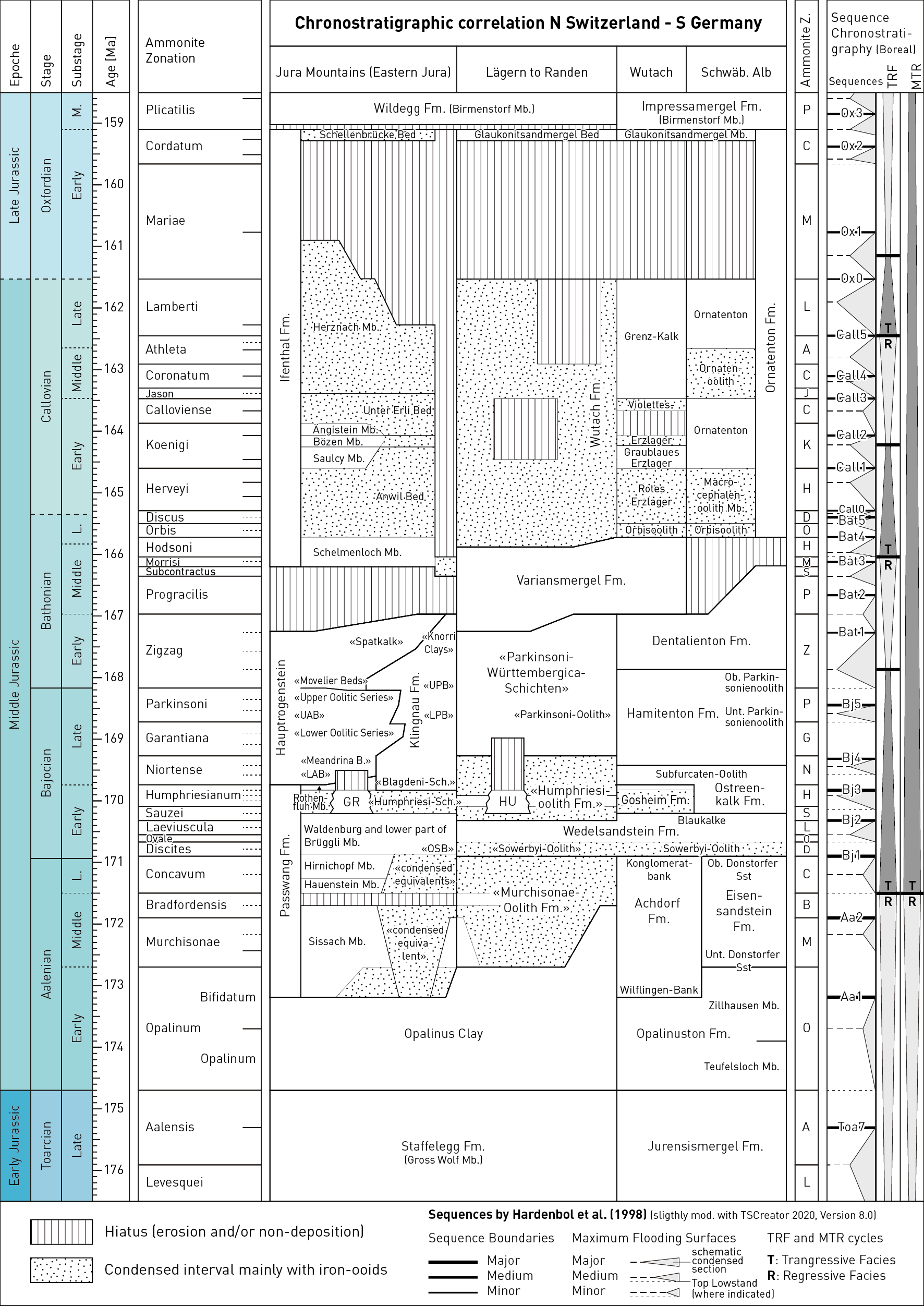
Fig. 4‑34:Stratigraphy of the Middle Jurassic of Northern Switzerland and the correlation with neighbouring Southern Germany
For figure explanations see next page.
Chronostratigraphy is based on the chronostratigraphic chart of the International Commission of Stratigraphy, v. 10/2020, Hesselbo et al. (2020) and TSCreator 2020 (Version 8.0); Ammonite zonation after Cariou & Hantzpergue (1997), Dietze et al. (2011, 2014, 2021); sequence chronostratigraphy and nomenclature are after Hardenbol et al. (1998) and slightly modified using TSCreator 2020 (Version 8.0). German stratigraphy after Bloos et al. (2006), Dietl (2006, 2007, 2008, 2010), Franz & Nitsch (2009). Abbreviations: L. = Late, M. = Middle, Fm. = Formation, Mb. = Member, B. = Beds, LAB = «Lower Acuminata Beds», UAB = «Upper Acuminata Beds», OSB = «Obere Sublata-Bank», LPB = «Lower Parkinsonien Bank», UPB = «Upper Parkinsonien Bank», GR = Gisliflue Reef, Sch. = Schichten, HU = «Herrenwis Unit», Unt. = Untere(r)/Lower, Ob. = Obere(r) /Upper, Sst = Sandstein/Sandstone, Z. = Zonation, TRF = Transgressive-Regressive Facies Cycles, MTR = Major Transgressive-Regressive Cycles. Modified after Bläsi et al. (2013) and Meier & Deplazes (2014).
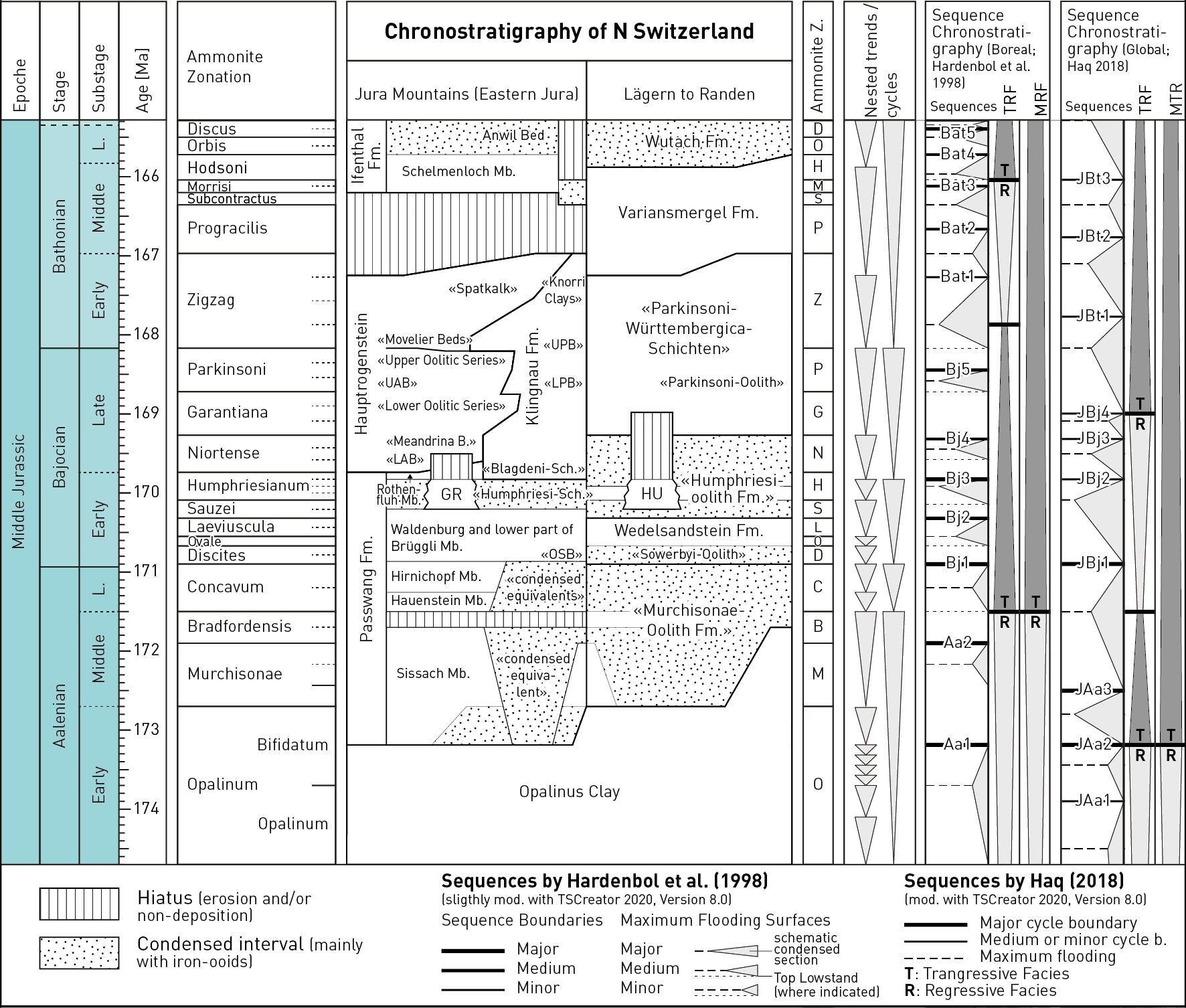
Fig. 4‑35:Biostratigraphy and lithostratigraphy of the Middle Jurassic (Aalenian to Bathonian) of Northern Switzerland with sequence stratigraphic correlation
Biostratigraphy and lithostratigraphy based on Bläsi et al. (2013) and Meier & Deplazes (2014). Chronostratigraphy is based on the chronostratigraphic chart of the International Commission of Stratigraphy, v. 10/2020, Hesselbo et al. (2020) and TSCreator 2020 (Version 8.0); Ammonite zonation after Cariou & Hantzpergue (1997), Dietze et al. (2011, 2014, 2021); Sequence chronostratigraphy and nomenclature after Hardenbol et al. (1998), Haq (2018) and slightly modified using TSCreator 2020 (Version 8.0). Abbreviations: refer to Fig. 4‑34.
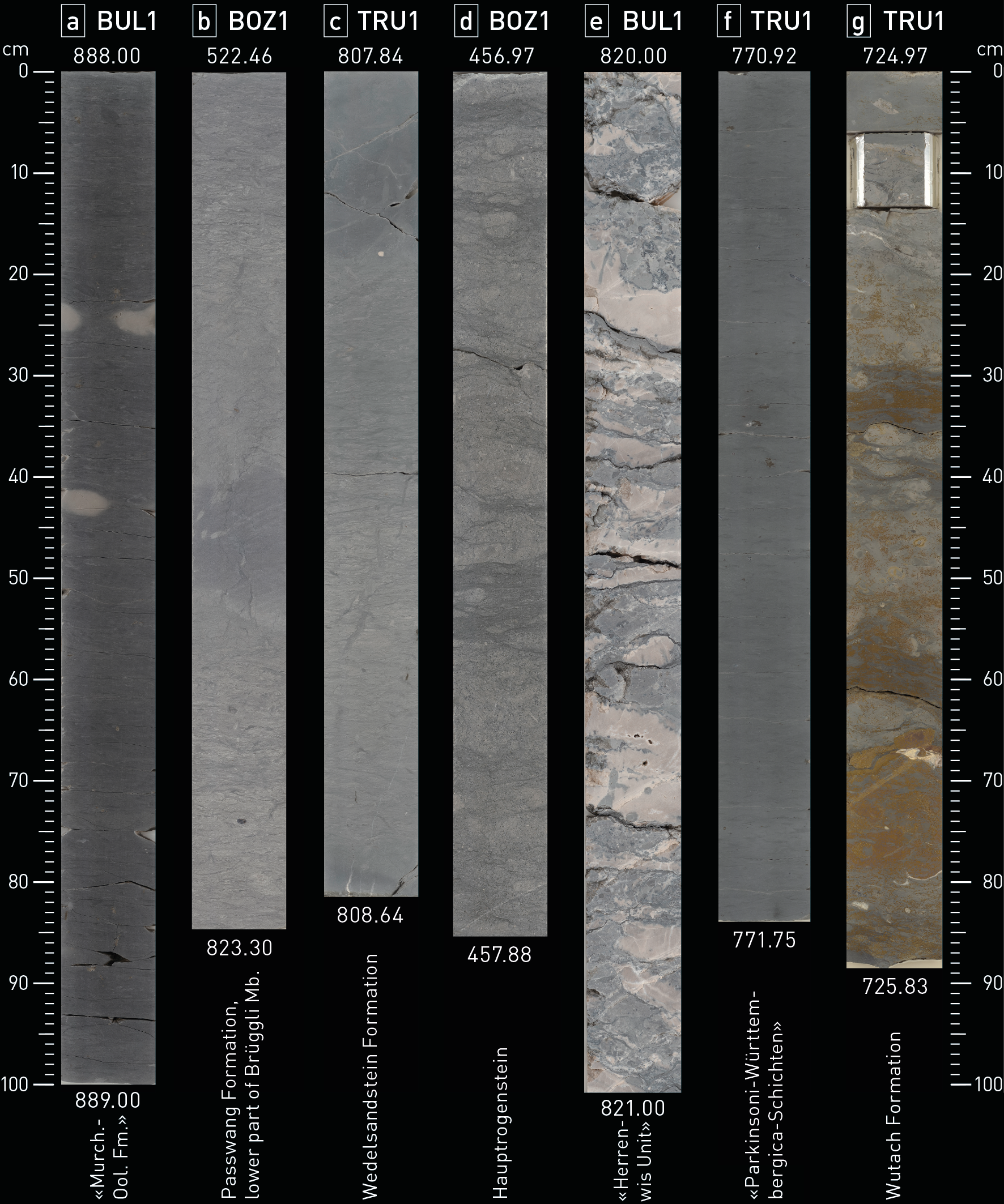
Fig. 4‑36:Selected core photos of the Dogger Group above Opalinus Clay (slabbed cores)
(a) Dark grey, silty to sandy claystone with siderite nodules; (b) light grey, silty to sandy limestone, bioclastic and bioturbated, and dark grey silty marl, bioturbated; (c) dark grey sandy limestone, bioclastic, bioturbated, and dark grey sandy marl, bioturbated; (d) light grey oolitic limestone, bioclastic, irregularly wavy bedded, ooids with black coatings and with interbeds of medium grey calcareous marl; (e) beige grey (matrix) to pale pink (corals) coral limestone, fossiliferous matrix (echinoderms, bivalves), corals often bored and few vugs; (f) dark grey silty claystone (calcareous), moderately fossiliferous (e.g. belemnites), pyrite; (g) repeated gradual transition of light grey iron-oolitic limestone to dark grey, iron-oolitic marl, reddish brown iron-ooids, very fossiliferous (esp. oysters).
In JO, the Dogger Group above Opalinus Clay can be subdivided into the following units:
«Condensed equivalents of the Sissach Member, Hauenstein Member and/or Hirnichopf Member»: In JO, the lowermost members of the Passwang Formation are condensed and only up to ca. 2 m thick. They consist of undulating, fossiliferous, iron-oolitic and calcareous hardgrounds (Wohlwend et al. 2019).
Waldenburg Member and lower part of Brüggli Member: These two members are treated as one ca. 20 – 25 m thick stratigraphic unit (Wohlwend et al. 2019), which can be subdivided into two parts in the boreholes of JO. The lower and larger part consists mostly of silty to sandy marl with numerous dm- to m-scale beds of mainly bioturbated, partly bioclastic, silty to sandy limestone (Fig. 4‑36b). The facies and thickness of the dm- to m-scale beds show nested trends, which are at least partly cyclic in nature. These trends or cycles can generally be correlated within JO (Fig. 4‑37). Based on thin sections of the TBO campaign, these beds show no elevated porosity. Towards the upper part, silty claystone with some interbeds of partly iron-oolitic limestone dominate.
«Humphriesi-Schichten» (upper part of Brüggli Member): This ca. 5 m thick unit is a prominent marker unit in the upper part of the Passwang Formation (Bläsi 1987, Wohlwend et al. 2019). It consists of fossiliferous iron-oolitic limestone and marl that stand out because of their reddish colour (Fig. 4‑37).
Rothenfluh Member: This lithostratigraphic unit is part of the Passwang Formation, where it is overlain by Hauptrogenstein (BOZ2 and BOZ1); outside the platform, the equivalent unit becomes part of the Klingnau Formation (RIN) (Gonzalez & Wetzel 1996). The Rothenfluh Member consists of an alternation of mostly bioclastic argillaceous, silty to sandy marl with decimetre-scale, partly nodular beds of bioclastic limestone.
Klingnau Formation: This unit consists mostly of fossiliferous, often nodular, calcareous, and argillaceous marl with some decimetre-scale beds of limestone. Sparse calcareous ooids are evidence of the adjacent oolitic facies of the Hauptrogenstein from which they were transported.
Hauptrogenstein: This formation was subdivided into up to eight informal subunits (Schmassmann 1945, Gonzalez & Wetzel 1996). In JO only the easternmost part of the strata of the Hauptrogenstein carbonate platform is encountered and – depending on the interfingering with the Klingnau Formation – a different succession of lithostratigraphic units can be distinguished. In general, the lower and larger part decreases in total thickness from 54 m in the west (BOZ2) to ca. 8 m in the east (RIN). It is characterised by predominantly oolitic and bioclastic limestone (Fig. 4‑36d) with dm- to m-scale beds of sandy marl in the lowermost section, otherwise calcareous marl with some ooids dominates. The ooids show typically black coatings. In BOZ2 the upper part of the Hauptrogenstein consists of «Movelier Beds», the lateral equivalent of the Klingnau Formation in BOZ1, and «Spatkalk» with a total thickness of 26 m; in BOZ1 and RIN only «Spatkalk» with a thickness of 12 m and 18 m is present. These units consist of bioclastic calcareous marl, bioclastic limestone and limonitic bioclastic limestone with some iron-ooids towards the top.
Ifenthal Formation: This formation was subdivided into several members by Bitterli-Dreher (2012). However, most of the members seem to be condensed in the study area. In JO, the lower part is characterised by fossiliferous limestone and bioclastic calcareous marl with some iron-ooids. This lower part may correspond to the Schelmenloch Member. The upper part is characterised by iron-oolite and iron-oolitic limestone with several hardgrounds (Fig. 4‑34).
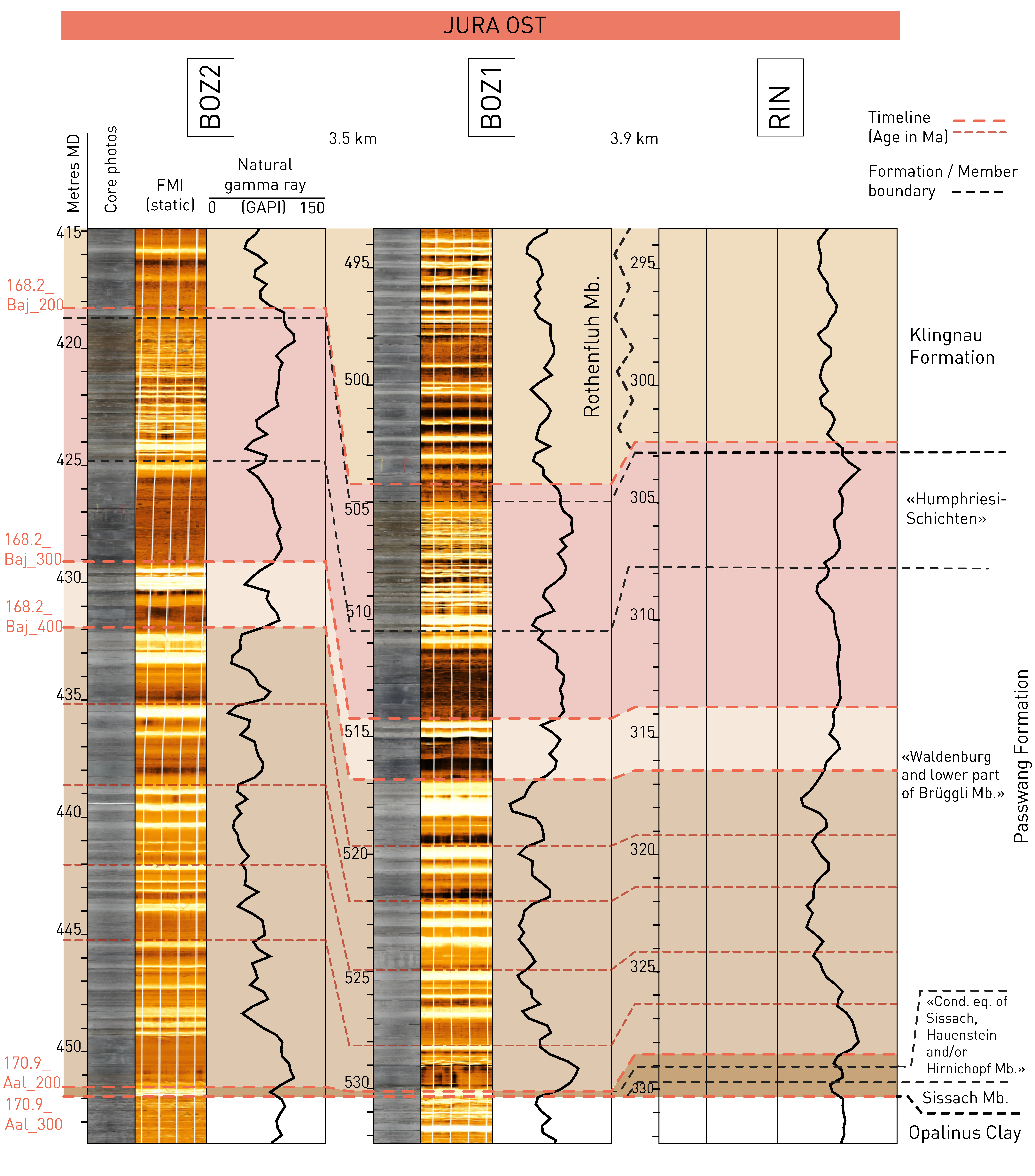
Fig. 4‑37:Detailed correlation of the sedimentary succession directly above the Opalinus Clay in boreholes of JO
In the formation microresistivity imaging (FMI) data, more conductive lithologies appear darker (e.g. claystone), whereas more resistive lithologies appear lighter (e.g. limestone or sandstone).
Dogger Group above Opalinus Clay in NL and ZNO
In NL and ZNO, the Dogger Group above Opalinus Clay starts with the «Murchisonae-Oolith Formation». The thickness decreases from western NL (ca. 15 m) to eastern NL (7 m) and is condensed in ZNO (≤ 1 m) (Fig. 4‑33). It consists of several nested trends or cycles of claystone, siltstone, marl, limestone and iron-oolite. Some of these nested facies trends might be similar to the ‘coarsening-upward’ or ‘shallowing upward’ successions as described by Burkhalter (1996). Some of these nested trends seem to correspond to boreal or global sequences as proposed by Hardenbol et al. (1998) or Haq (2018) (Fig. 4‑35).
In NL, the overlying Wedelsandstein Formation increases significantly in thickness from the west (2 m in BAC1) to the area where it underlies the «Herrenwis Unit» in eastern NL (28 m in BUL1). It mainly comprises claystone and silty claystone with a few decimetre-scale calcareous beds. In ZNO, the thickness varies between ca. 25 and 35 m and mainly consists of silty marl and argillaceous siltstone with many beds of argillaceous, silty to sandy limestone (Fig. 4‑33).
The following «Humphriesioolith Formation» is only up to 2 m thick in NL and consists predominantly of iron-oolitic to limonitic, argillaceous to calcareous beds. In ZNO this formation reaches a thickness of ca. 10 – 13 m and consists in the lower and upper part of iron-oolitic and bioclastic limestone to marl and iron-oolite and, in the middle part, of calcareous to argillaceous marl.
The «Herrenwis Unit» is found only in the eastern part of NL. It consists of ca. 40 m thick strata associated with an isolated carbonate platform that is embedded in argillaceous strata (Fig. 4‑33) and extends over several square kilometres. It consists in STA3 and BUL1 of coral limestone intercalated with marl and up to several-metre-thick bioclastic limestone (encrinite) and occasional beds of argillaceous marl. In STA2, the basinal part of the «Herrenwis Unit» comprises a medium- to thick-bedded succession of bioclastic limestone, bioclastic calcareous marl and bioclastic argillaceous marl.
The overlying unit «Parkinsoni-Württembergica-Schichten» fills up the positive relief created by the «Herrenwis Unit» in NL. Accordingly, this unit decreases in thickness from BAC1 with 48 m to STA3 with 2 m (including the overlying Variansmergel Formation). In ZNO, the thickness of the «Parkinsoni-Württembergica-Schichten» unit varies between ca. 30 and 35 m. It consists of (silty) claystone and silty marl with some decimetre-scale beds of bioclastic limestone.
The Variansmergel Formation has a thickness of ca. 2 – 5 m in NL and ca. 12 m in ZNO. Its composition is similar to the «Parkinsoni-Württembergica-Schichten», but generally with more decimetre-scale bioclastic limestone beds.
Finally, the Wutach Formation has a thickness of ca. 1 – 5 m and consists of a very fossiliferous succession of (iron-oolitic) argillaceous marl, iron-oolitic, bioclastic limestone and iron-oolite with several hardgrounds.
In NL and ZNO the Dogger Group above Opalinus Clay can be subdivided into the following units:
«Murchisonae-Oolith Formation»: In general, this formation can be separated into two parts (Fig. 4‑33, Fig. 4‑38). The lower part reaches the largest thickness in eastern NL, with 11 m at BAC1. It consists of an alternation of dm- to m-scale beds of calcareous marl and sandy, silty to bioclastic limestone with some iron-ooids and limonitised components. This part terminates with cross-bedded limonitic limestone to iron-oolite and a hardground at the top. The lower part is similar to corresponding outcrops of the Sissach Member at the Surb River or Acheberg east of NL (Wohlwend et al. 2019). Within NL, the lower part decreases in thickness and is condensed to a calcareous bed in BUL1 as well as in ZNO. The upper, ca. 4 – 11 m thick part of the «Murchisonae-Oolith Formation» consists in NL of silty claystone (Fig. 4‑36a) and argillaceous marl with bioclastic limestone and hardgrounds in the upper part. In ZNO the corresponding unit has a thickness of ≤ 1 m and consists of an argillaceous siltstone with a calcareous, iron-oolitic hardground at the top.
Wedelsandstein Formation: In NL the Wedelsandstein Formation consists of at least two facies trends or cycles of predominantly claystone to silty claystone, some argillaceous marl and decimetre-scale calcareous beds at the top, often including a hardground (Fig. 4‑38). Towards the west in NL, and especially as seen in the drill cores of BAC1, the Wedelsandstein Formation is strongly reduced and difficult to delineate solely based on lithological criteria; for this reason biostratigraphic evidence was additionally considered (Nagra (ed.) 2023a, Dossier IV). In ZNO the lower and larger part of the Wedelsandstein Formation mainly comprises argillaceous to calcareous siltstone with many dm- to m-scale beds of mostly bioturbated and bioclastic, partly micritic, silty to sandy limestone (Fig. 4‑36c). The dm- to m-scale beds show nested facies trends or cycles, which can be at least partly correlated within ZNO (Fig. 4‑39). Based on the thin sections from cores retrieved during the TBO drilling campaign, these beds show no elevated porosity. Towards the upper part, silty claystone with some calcareous interbeds dominate. The Wedelsandstein Formation is almost time-equivalent to the Waldenburg Member and lower part of the Brüggli Member in JO (Fig. 4‑37).
«Humphriesioolith Formation»: In NL this formation is thin (2 m) and even missing in STA3. Its composition varies in terms of content of iron-ooids, limonitic components, carbonate and silt from borehole to borehole, but is dominated by marl. In ZNO the «Humphriesioolith Formation» can be divided into three parts by the occurrence of iron-ooids: a lower iron-oolitic interval, a marly interval with calcareous beds without iron-ooids, and an upper iron-oolitic interval (Fig. 4‑39).
«Herrenwis Unit»: In the eastern part of NL, the first evidence for the presence of the «Herrenwis Unit» was provided by 2D seismic data, resulting in the description of a sedimentary body forming a positive relief on top of the underlying sedimentary rocks (Meier & Deplazes 2014 and references therein, Fig. 4‑40, Fig. 4‑41). This unit was recognised for the first time during the BUL1 campaign. The term «Herrenwis Unit» was introduced as an informal stratigraphic unit of undefined rank named after the BUL1 borehole locality "Herrenwis" (Nagra (ed.) 2021a, Dossier III). The «Herrenwis Unit» could already have been drilled in the Eglisau-2 borehole from 1957 (Cadisch 1959) if the final depth is taken into account and the rudimentary recording is reinterpreted. In STA3 and BUL1, the isolated carbonate platform is dominated by coral and bioclastic limestones, which are partly porous, and some beds of argillaceous marl (Fig. 4‑36e). The 40-metre-thick coral reef exhibits a large number of specimens and low species diversity (i.e. consisting of a few taxa), which is typical for Bajocian reef environments (Ruchat et al. 2024). At least two notable decreases in species diversity exist that partly coincide with increased clay-mineral contents in this unit. The «Herrenwis Unit» terminates with a prominent hardground. The more argillaceous basinal part of the «Herrenwis Unit» or the periplatform wedge was drilled in STA2 and its north-westernmost extent also in the Weiach borehole.
«Parkinsoni-Württembergica-Schichten»: This unit mostly consists of an alternation of lenticular- to flaser-bedded claystone and silty marl with decimetre-scale beds that occur more frequently towards the top (Fig. 4‑36f). In the lower or lowermost part, iron-oolitic to limonitic horizons can occur that may partly correspond to the «Parkinsoni-Oolith».
Variansmergel Formation: This formation has a similar facies to the «Parkinsoni-Württembergica-Schichten», but it is generally more fossiliferous, including brachiopods, bivalves and crinoids partly concentrated in coquina beds.
Wutach Formation: This formation corresponds partly to the Ifenthal Formation in JO (Fig. 4‑34) and represents a condensed succession of iron-oolite, iron-oolitic limestone and marl (Fig. 4‑36g).
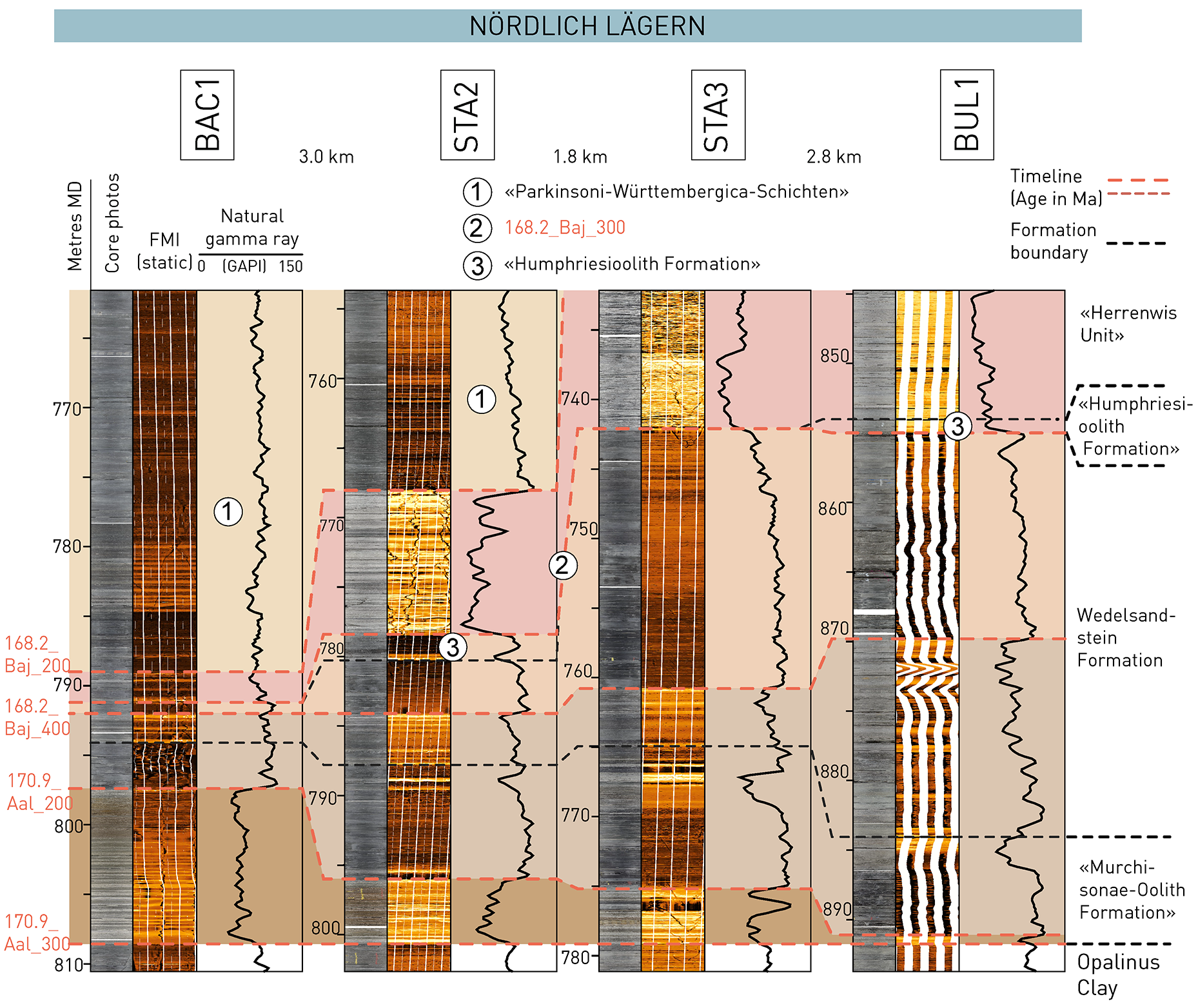
Fig. 4‑38:Detailed correlation of the sedimentary succession directly above the Opalinus Clay in boreholes of NL
In the formation microresistivity imaging (FMI) data, more conductive lithologies appear darker (e.g. claystone), whereas more resistive lithologies appear lighter (e.g. limestone or sandstone).
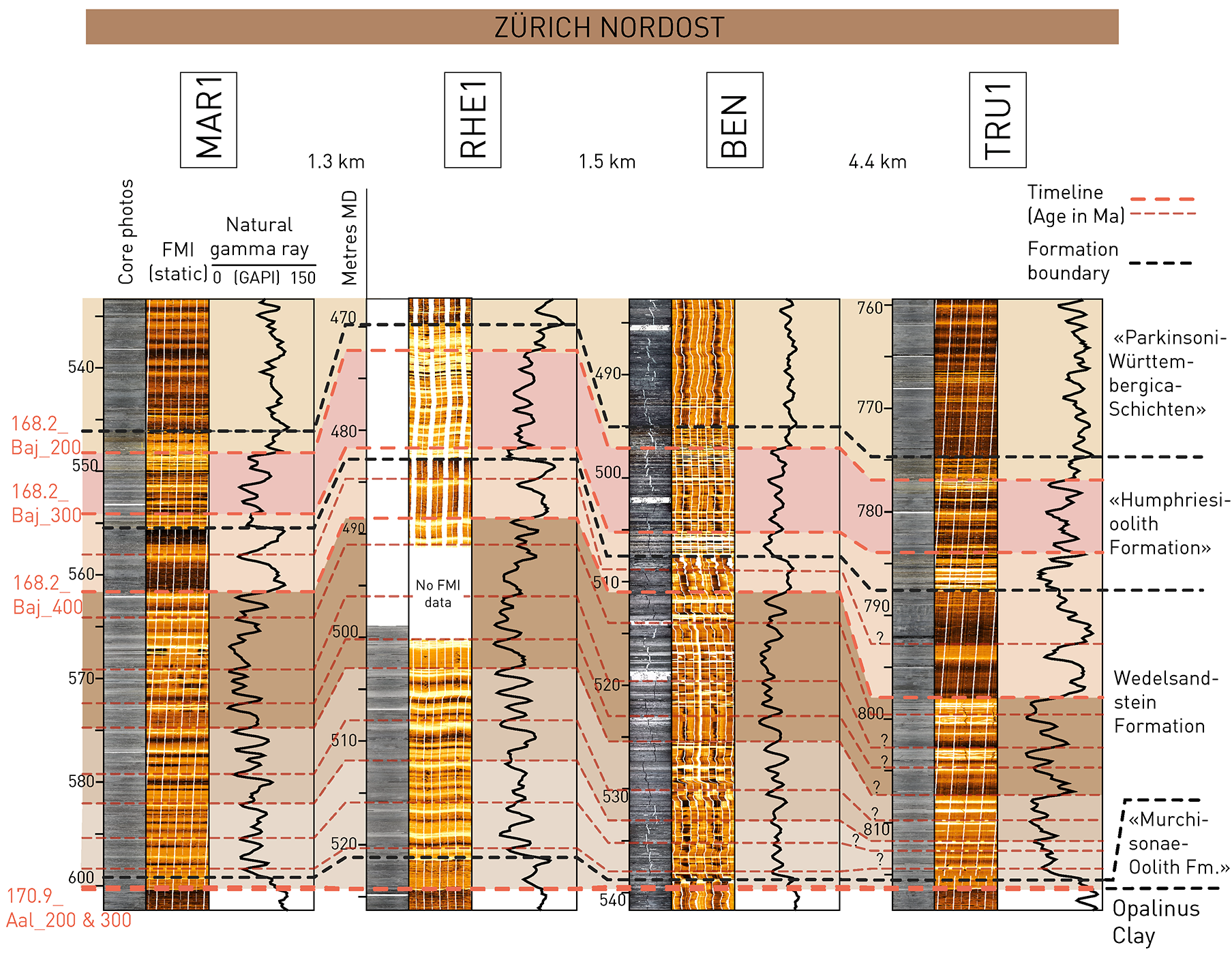
Fig. 4‑39:Detailed correlation of the sedimentary succession directly above the Opalinus Clay in boreholes of ZNO
In the formation microresistivity imaging (FMI) data, more conductive lithologies appear darker (e.g. claystone) whereas more resistive lithologies appear lighter (e.g. limestone or sandstone). In RHE1, thicknesses are larger because it is an inclined borehole.
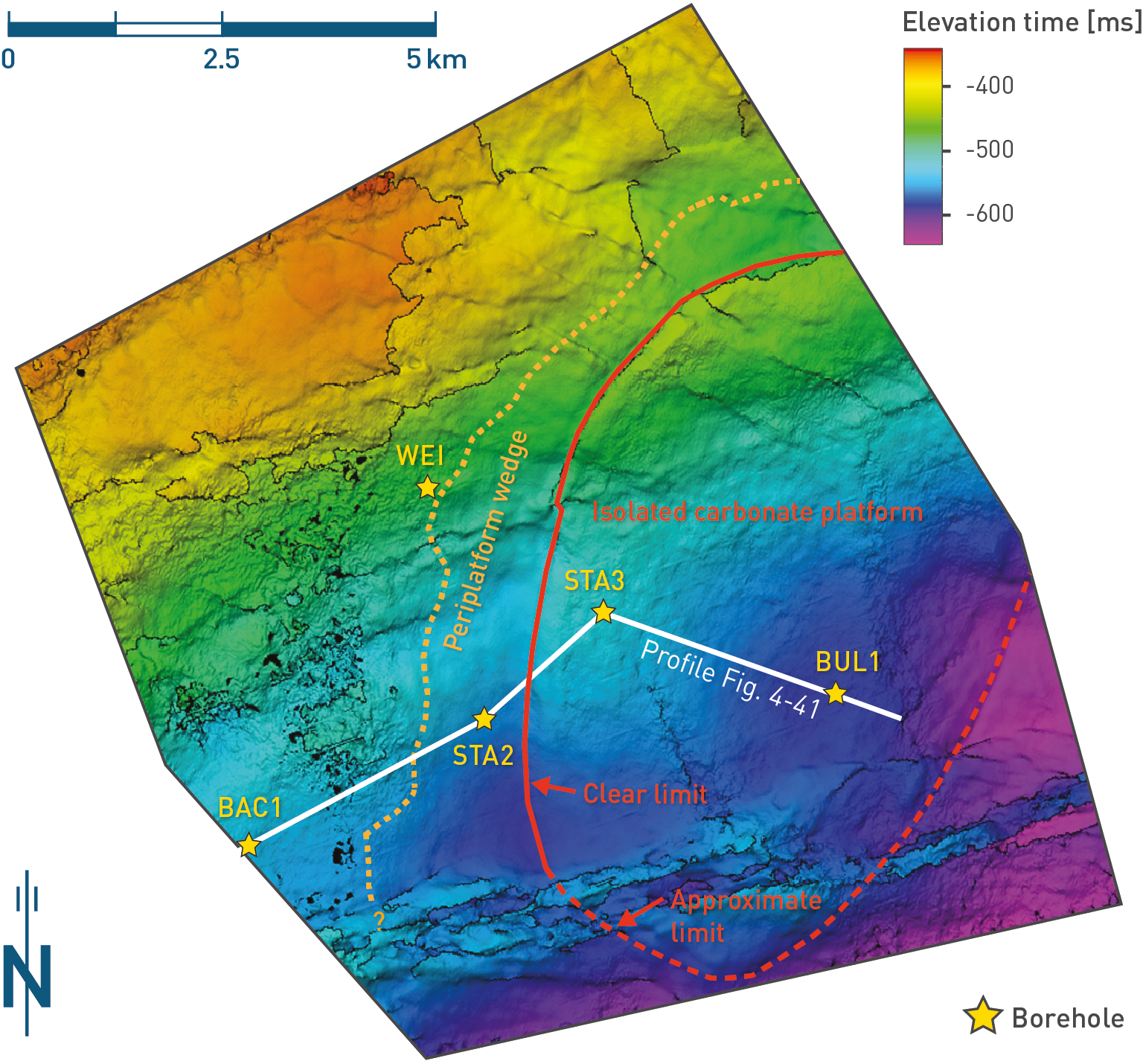
Fig. 4‑40:Subcrop map (top reflection of the «Herrenwis Unit») of the geophysical survey area acquired in NL with seismically derived extent of the isolated carbonate platform and of the periplatform wedge
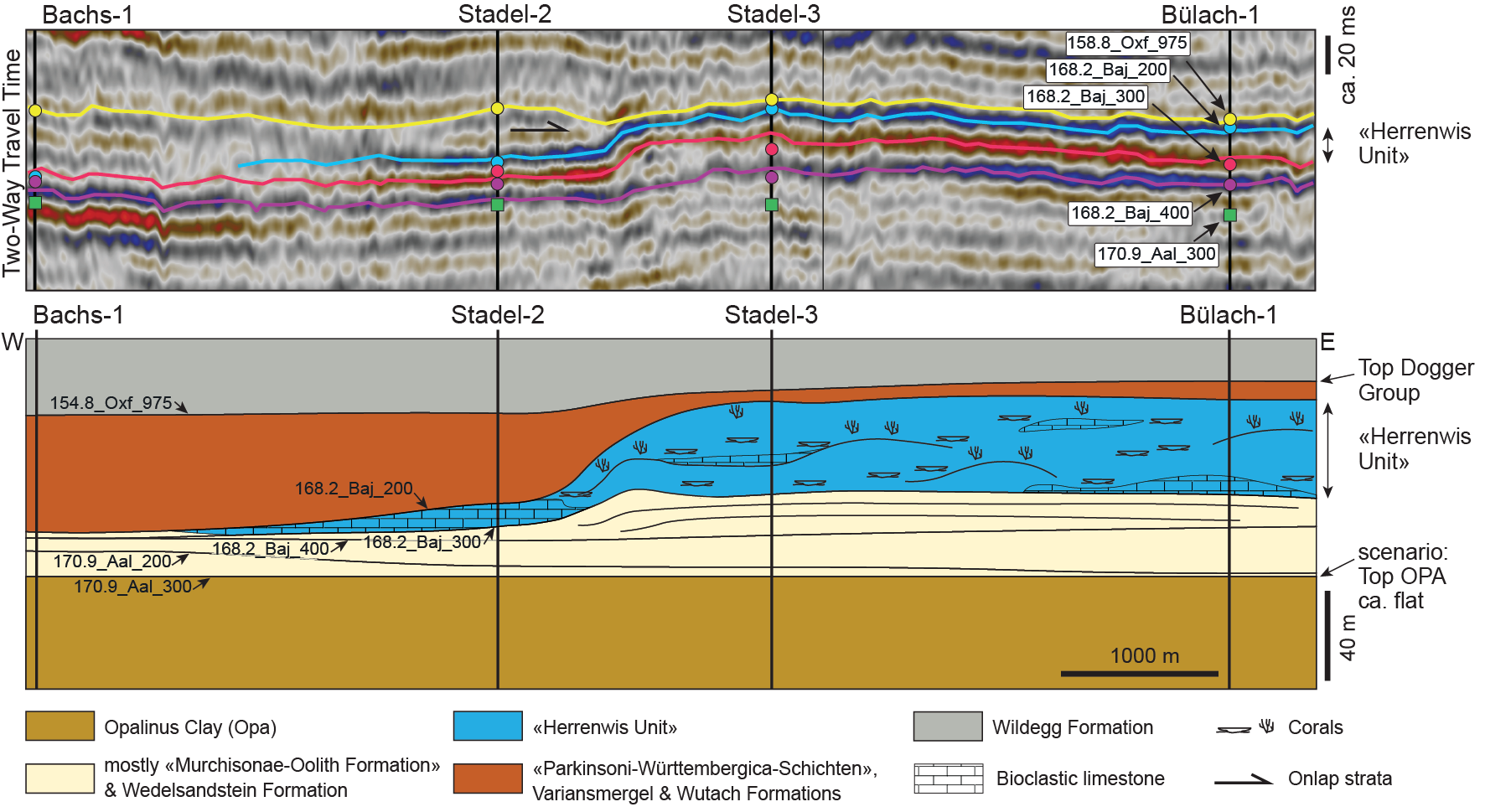
Fig. 4‑41:E-W-oriented seismic profile across the western edge of the «Herrenwis Unit» and conceptual sketch of the extent of the «Herrenwis Unit» and adjacent units
The upper panel is flattened to ca. Top Keuper Group, the lower panel to Top Opalinus Clay. Refer to Nagra (2024b and 2024f) for discussion of the seismic reflection data.

